
A recent BBC article titled, “Is there a Sikh code of silence on sexual grooming?” discusses how six men were jailed in the UK for offences including child prostitution – the case receiving significant attention since it was the first high-profile case involving a Sikh victim of sexual abuse leading to convictions.  As a follow up to the article, BBC’s Inside Out London showcased a 30 minute report uncovering the “hidden scandal of sexual grooming of young Sikh girls by Muslim men.”  The show is receiving much attention – particularly within the Sikh community – with much discussion around the tense issue, race relations and what’s being done (or not) to address the problem.
The documentary (which you can view below) showcases real cases where girls courageously discuss their experiences being “groomed” and forced into prostitution. Â Sexual abuse is a serious issue within many communities, the Punjabi community is no exception. Â Unfortunately, a lack of openness to talk about the issue often leaves victims and their families living in isolation. Â The report identifies the work of an organization within the UK called the Sikh Awareness Society that provides some assistance to these young girls and often bringing to light the criminal activity which local law enforcement agencies often neglect. Â The organization has committed to traveling to all the Gurdwaras in the UK to provide information about the issue and to help parents understand what their children may be experiencing. Â While it is unclear how large the issue really is or how long it has been occurring – it is nevertheless significant that this discussion is even taking place (especially in Gurdwaras!).
I found the report to be troubling for several more reasons.
From all of us here at The Langar Hall, wishing you a very happy and inspired Gurpurab.

I recently came across information about Speaking in Tongues, a documentary which follows four diverse children on a journey to become bilingual. As the website states, “At a time when 31 states have passed “English Only” laws, four pioneering families put their children in public schools where, from the first day of kindergarten, their teachers speak mostly Chinese or Spanish.” Before I continue, take a peek at the trailer:
The film discusses the growing need that parents are feeling to raise their children multilingual.
Happy Mother’s Day to all the wonderful mother’s who have nourished our physical bodies with food made out of love and nurtured our souls with their warm spirits.
I leave you with one of Satinder Sartaaj’s most beautiful songs, “Ammi”. Among all the many Punjabi songs about mothers, Sartaaj has brought us one of the best. He captures a mother’s spirit and it’s priceless value to not only children but the world.

As we celebrate motherhood today, let’s also remember the value of the girl child. Guru Nanak Ji reminds us in Raaj Aasaa on Pannaa 473:
I have noticed these past couple of weeks that discussions about the value of Punjabi have become more prevalent. The issue of maintaining our “ma boli” is constantly on our minds and manifests in our everyday lives. However, with the onset of many Vaisakhi melas, Nagar Kirtans, and of course Satinder Sartaj concerts the discussions are heightened.
Recently, on Jus Punjabi’s “Aaj Da Mudda” show, there was an insightful conversation about pronunciation and the longevity of Punjabi. The host and guest discussed how East Punjabi’s pronunciation of words have changed (we are taking the easier route). Despite this change in pronunciation, the guest highlighted how Punjabi has survived the most turbulent of times (e.g. the state language during Maharaja Ranjit Singh’s rule was Farsi and the 1960’s division of India Punjab).
As he spoke, I was reminded of Gurdas Mann’s song “Punjabiye Zubane” (listen below). This song captures how the strength of the Punjabi language was developed over time. It is this strength that has allowed it to survive. I am left wondering if we 1) have the will and 2) the capacity to nurture and love this language like others have done in the past. Can we help nurture the strength of Punjabi in today’s context? What do you think?

A true Sikh hero, Fauja Singh, turned 99 last Thursday.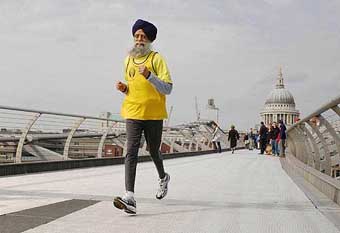
Turbaned Tornado, Fauja Singh turns 99 on Thursday. Here’s wishing this Punjabi icon who manages running marathons at an age not many reach, many happy returns of the day. Besides other gifts that he’d be receiving on his birthday on April 1, this real life ‘Forest Gump’ is all set to give himself a present — by setting yet another marathon record at the ripe age of 99. “I can only sleep, run or walk. I’ll die the day I sit down,” the young nonagenarian had told this scribe in an interview in 2005 on the streets of Ilford, Essex, UK, where he has been living along with his son Sukhjinder Singh since the 1980s. He shifted to UK after having lost his wife and younger son in quick succession in Punjab. [TOI]
“Grand harmony aims at elevating every unit of social and cultural life to the height of heroic majesty”
– Harinder Singh Mehboob (1937-2010)
Revered Punjabi poet, Harinder Singh Mehboob, passed away on Sunday night leaving behind a significant mark on the map of Punjabi literature. Mehboob, who had also worked as Principal of Khalsa College Gardhiwala, had written Sahji Rachio Khalsa and Jhanan Di Raat, a book on poetry which he received an award for in 1991. The Sahiyta Award was not without controversy. Regardless, Mehboob’s work will continue to be appreciated by the community:
Jhanan Di Raat which wins Sahitya Akademi Award for Punjabi is his second major publication. A collection of over two hundred poems, written over a period of three decades, in seven anthologies of poetry now published as one volume, Jhanan Di Raat is a formidable work both in conception and in content. The stylistic range and virtuosity reflected by this 828 page volume is enormous; and while the ideological orientation and the concerns of the age as reflected in the poems change gradually, the poet’s warm humanism is always extent.
The poet’s synthesis of the folk poetic traditions with contemporary trends is a distinctive feature; and a recurrent theme is his deep nostalgia for the past glory of Punjab. For its variety of styles, images and metaphors, its vastness of scope, its amalgamation of modern diction with folk-forms and its poetic intensity, this work is regarded as an outstanding contribution to Indian poetry in Punjabi. [link]
He will be remembered and appreciated for elevating Punjabi literature and for his important contributions to the Qaum.
We know there is a sizable Sikh population in Pakistan, despite many Sikhs who were forced to migrate to India during partition. In 2008, the Pakistani Sikh Anand Marriage Act was passed in Pakistani, which allowed Sikhs in their marriage certificates as Sikhs. Currently in India, Sikhs are identified as Hindus in marriage certificates.
Interestingly, I came across this music video by Jassi Singh Lailpura (i.e. Jasbir Singh) , a Pakistani Sikh.
He also gave an interview on a morning Pakistani television show where he talked more abut his music and life. Lailpura believes that a Pakistani is not defined by a religion or race, but by someone who believes it to be their country. It is obvious from the interview that he is a proud Punjabi Sikh from Pakistan. He talks about the impact of Partition on a Sikh woman. You can watch his interview below.

I came across this amazing video of a white guy singing a traditional Punjabi song, while playing a drum, in an outside mall area (hat tip: Satwinder). Often we wonder how Punjabi will be preserved. I think one of the unique ways is through music.
I hope you enjoy it as you begin your weekend!

Happy Lohri! 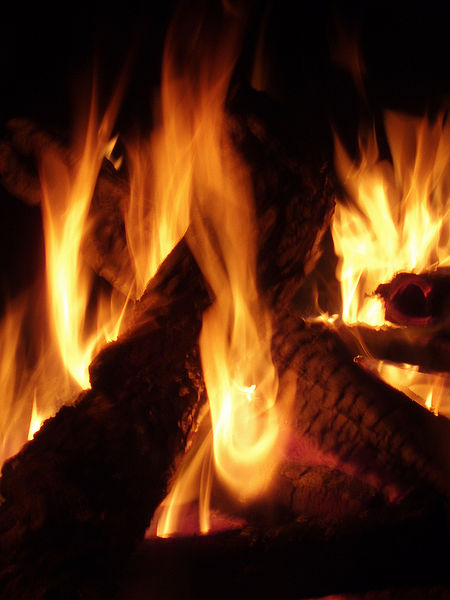
Lohri is celebrated around January 13th every year. In Punjab, it marks the beginning of the harshest part of winter. Here’s what you need to get started with your celebration: a giant bonfire, popcorn, sweets, and songs about Dulha Bhatti, a robber who helped the poor.
Lohri is usually celebrated in the outdoors by friends and family who get together and have a bonfire in the evening. Lohri signifies onset of intense winter in Punjab and surrounding areas. Cold weather is good for wheat hence farmers celebrate Lohri so that their crops lead to a good harvest.
During the day, children go from door to door singing folk songs in praise of Dulha Bhatti, a thief in folklore who helps the poor and fights for their rights. These children are given sweets and savories, and occasionally, money. These collections are known as Lohri, and they are distributed at night during the festival. Some may be offered to the sacred fire. Peanuts, popcorn and other food items are also thrown into the fire as an offering to the God of Fire, Agni. [wikipedia]
Usually, in Punjab, families have an especially large Lohri celebration if a boy has been born in the family in the prior year. We’re talking DJs, catered food, and dancing all night in the streets (at least in the city).
This year, you can make Lohri special by donating to Ladoos: Pink & Blue.
A few weeks ago, Maple Leaf Sikh said that “We often lament the state of our gurdwaras but we should just as often stop and think about how much we have accomplished.” How very true! How often do we highlight communities where things are working well for the Sikh diaspora? 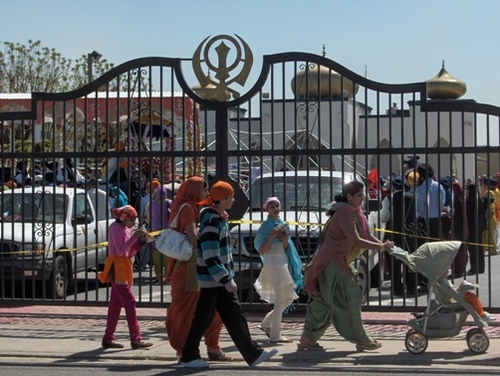 A recent article tells us how a small town in Central California, Livingston, is helping to bridge a gap created by a cultural, linguistic and religious divide between generations. Recognizing that language is the link to religion for Sikhs, the sangat in Livingston has ensured that children in the area have the opportunity to attend Punjabi classes and learn the language.
A recent article tells us how a small town in Central California, Livingston, is helping to bridge a gap created by a cultural, linguistic and religious divide between generations. Recognizing that language is the link to religion for Sikhs, the sangat in Livingston has ensured that children in the area have the opportunity to attend Punjabi classes and learn the language.
There’s a lasting link between the 35-character alphabet used to write Punjabi and the Sikh religion. The Sikh scriptures and the Punjabi language of many Sikhs were written in a script known as Gurmukhi. So to be fully initiated into the religion, you must know how to read it… Tripat Grewal, who helps teach Punjabi language classes, said that for many Sikhs the fact that their children couldn’t understand what was being said in the temple was at the heart of the effort to create Punjabi-language classes. “The religious part was very important,” she said. [link]
When the space at the local Gurdwara became too cramped, the leaders secured classroom space at a local elementary school. While these efforts aren’t the first of its kind, it’s always great to hear a community coming together to address a need. For those of us who are familiar with the small towns scattered across central california — these punjabi classes are vital to bridging the divide between generations. With large immigrant populations and many living in joint families – being able to communicate effectively with one another is and will continue to be an important part of the diaspora.
I came across this video from a cultural event in Northern California. It features Ustad Lal Singh Ji Bhatti, among others, live on stage performing Boliyan and Tappe in his famous voice. You get to hear (and see) many folk instruments including the Sarangi, Tumbi, Algozey, Dhad, Chimta, Dhol, etc. We sometimes loose some of these instruments to the bass and background noise in todays remix culture…its nice to hear them center stage. Enjoy the videos after the fold.
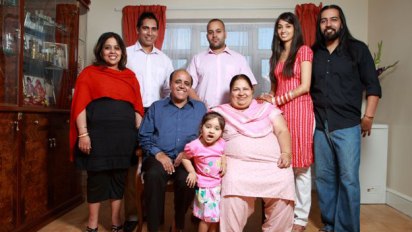 Guess what a British Asian family is hitting the reality TV scene … “Meet The Grewals” will begin filming 24/7 on November 4th in the UK. The three-generation family will be filmed for over eight weeks. Their lives will be aired as part of the iconic series, The Family, on Channel 4.
Guess what a British Asian family is hitting the reality TV scene … “Meet The Grewals” will begin filming 24/7 on November 4th in the UK. The three-generation family will be filmed for over eight weeks. Their lives will be aired as part of the iconic series, The Family, on Channel 4.
Director David Clews says: “I think the film captures both the big issues and the intimate moments of family life and I hope everyone will enjoy spending time with the Grewals in the same way I have.”
A few weeks ago I attended the Sikh Education Conference hosted by the Sikh Research Institute that brought together educators from across North America. One of the presentations focused on the importance of language education. The presenter made it quite clear – teaching young children multiple languages does not confuse them or hinder their development. In fact, research has shown that bilingualism and multilingualism is advantageous in several aspects. Exposure to two or more languages increases critical thinking skills, creativity, and flexibility of the mind in young children.
According to neurobiologists, the human brain is “hardwired” to learn languages as an infant and toddler. Any language learned during this period is stored, literally, in a different part of the brain than language acquired later in life, and in the right environment young children can learn up to four languages without significant slowdown. [link]
It seems, however, than in immigrant communities there is often hesitation around raising children in multilingual homes. The fear is that children will not learn English fast enough which will pose an obstacle to their assimilation into American society. It happens in our own community – young Punjabi children not being able to communicate with their older Punjabi grandparents. There is a language gap and if we consider the importance of oral tradition in our history – you can just imagine how much information is not being communicated and in fact being lost between generations.
All help is needed to locate Karamjit Kaur,16, a Punjabi Sikh teenage girl from Reno, Nevada who went missing on Wednesday evening while r iding her bike. She had arrived from India eight-months ago and recently started learning how to ride her bike. On a hot Wednesday evening around 6:30pm Karamjit went outside in her black top and blue cotton pajamas to ride her bike and never came back home. The Reno police suspect foul play. Karamjit’s bike was found a quarter of mile away from her house by a skateboarding park.
iding her bike. She had arrived from India eight-months ago and recently started learning how to ride her bike. On a hot Wednesday evening around 6:30pm Karamjit went outside in her black top and blue cotton pajamas to ride her bike and never came back home. The Reno police suspect foul play. Karamjit’s bike was found a quarter of mile away from her house by a skateboarding park.
Karamjit is approximately 5’7” tall, 140 pounds, with long black hair and brown eyes. She has a scar on her forehead, and her left canine tooth is longer. She was last seen wearing a black v-neck short-sleeve t-shirt, bright blue cotton pajama bottoms and black flip-flops. Her family is devastated and praying that she returns home soon.
The Reno Police Department is asking for the public’s assistance in locating her. Anyone with information relating to this incident should contact the Reno Police Department at 775-334-2115, Secret Witness at 775-322-4900, or www.secretwitness.com. All calls to Secret Witness remain anonymous, and Secret Witness pays rewards for information on all crimes.
Coblogged by Reema and Sundari
There is a deafening silence that surrounds Punjabi-Sikh women. Too often, when discussing challenges that some women may be facing, the conversation is shut down and de-legitimized by one or two angry voices. Interwoven into this is the unrelenting identity debate of labeling actions “Punjabi” versus “Sikh” which often distracts us from the true issue at hand.
 For example, recent posts about issues affecting women turned out to be way more controversial to a few commentors than anything in the original post merited. A post on forced marriages drew virulent ire from a few readers for discussing forced marriages under a title that included the word “Sikh.” A post on a change in asylum law which also included “Sikh” in the title drew the same virulent response. Earlier in the year, a post named “The Rise and Fall of Sikh Girls,” was accused of creating unnecessary attention with it’s title.
For example, recent posts about issues affecting women turned out to be way more controversial to a few commentors than anything in the original post merited. A post on forced marriages drew virulent ire from a few readers for discussing forced marriages under a title that included the word “Sikh.” A post on a change in asylum law which also included “Sikh” in the title drew the same virulent response. Earlier in the year, a post named “The Rise and Fall of Sikh Girls,” was accused of creating unnecessary attention with it’s title.
This reaction is reminiscent of the treatment that was meted to Harshinder Kaur by an Indian government official when she attempted to talk about female feticide in Geneva.
She said in her talk at Geneva she had pointed that it was very essential to educate the women and girls of Punjab to make them aware of their rights and to alleviate their sufferings. For this, UN must give aid to needy girls in their education directly as it should reach at grass level where the aid is not reaching. She said he is giving monetary help to 300 needy girls for their education through her own trust. This issue was disliked by a participant P. Srivastava and she [sic] threatened her after she finished her talk and came out of hall and advised her not to visit UN ever again if she has to utter any [words against the] government. She clarified repeatedly that said [sic] she has not uttered anything about government but was worried only about education of poor girls of Punjab. [PunjabNewsline ]
Besides the insult felt by readers at the idea of Sikhs not living as Sikhs should and the fear that a negative image of Sikhs was being portrayed, there is another stream of thought shutting down these conversations that I think needs to be addressed.
In many ways, the Punjabi-Sikh art scene is expanding exponentially these days. Just 10 years ago, beyond major, mainstream singers, I don’t think there was an arts scene, except maybe in people’s homes. Today, there are film festivals in most major cities like Spinning Wheel and the upcoming Sikh Heritage Film Fest in NY, art exhibits in museums such as the recent exhibit at NY’s Rubin Museum and current exhibit at the London’s Victoria and Albert, and even spoken word shows like When Lions Roar and Lahir. There are independent artists writing thoughtful lyrics, creating original beats, and giving some of our community’s concerns a voice. One of my favorites from this summer is Humble the Poet’s “Singh with Me” featuring Sikh Knowledge.
Yet, while the number and modes of art and artists grows in our community, many mainstream musicians are following  mainstream trends… videos featuring flashy cars rented for the shot, women as props, all at some party. Maybe they’re catering to what they think the audience wants, but the audience is clamoring for what they see as glamorous… which is manufactured to cater to the whims of the audience. This degenerative, downward spiral has led to recent hits such as RDB’s “Om Mangalam.” (See end of post.)
mainstream trends… videos featuring flashy cars rented for the shot, women as props, all at some party. Maybe they’re catering to what they think the audience wants, but the audience is clamoring for what they see as glamorous… which is manufactured to cater to the whims of the audience. This degenerative, downward spiral has led to recent hits such as RDB’s “Om Mangalam.” (See end of post.)
RDB is clearly identifiable as Punjabi-Sikh (let’s not talk about who’s a good or bad Sikh- that’s boring), wearing the now fashionable Palestinian support scarf, and singing Om Mangalam in this video on the homepage of their official site. This is definitely a case of trying to do too much and doing it all badly. There’s nothing inherently wrong with being Punjabi, singing Hindi music (while wearing a Palestinian support scarf), in a video with meaningless lyrics. It’s just not art. Some might call it entertainment, though I’d call it a train wreck.
I found this video of the Miss World Punjaban 2008 contest interesting because the contestant chose to highlight her Sikh identity that is intimately linked to Punjabi culture. I find that it is easy for us to “intellectually” talk about the separation of the two identities. However, for many, being Sikh and Punjabi are intimately connected. They mutually exist-one does not envision oneself without the other.
Ms. Gurpreet Kaur Khaira from Canada chose to highlight this co-existence of the two identities in the talent portion of the contest. She performs dhadi vaar, while wearing a simple white suit and kessari chunni.
Who is Miss Punjaban and what does she look like varies … there is not only one notion of Punjabi “beauty” or identity … at least in this beauty contest! You can sing dhadhi vaar in simplicity or a Punjabi song in a bright red chunni and kokaa.
(FAST-FORWARD TO 1:44 to see Ms. Gurpreet Kaur Khaira from Canada)

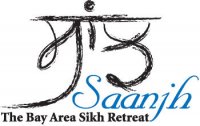
“Saanjh”-the annual Bay Area Sikh Retreat is taking place Thursday, August 27th-Sunday, August 30th at the Monte Toyon campsite near Santa Cruz, California. Share your experiences and connect with other Sikhs through a Guru-inspired sangat. This year’s theme is “Developing a Panthic Vision Towards 2084”. In 2009 we commemorate the 25th anniversary of 1984. When we fast-forward to its centennial where do we want to be as a Panth-a Sikh community? What is our collective vision for 2084? How do we need to develop as individuals and a community in order to heal ourselves and find solutions to our communal problems? Come share your opinions and connect with other concerned Sikhs through a collaborative approach to finding solutions. You will be inspired by diwans, conversations, debates, and laughter. Register by August 3rd to avoid late fees. There is a separate fee schedule for students and professionals. For more information visit www.saanjh.org. If you have any questions, e-mail sawal-jawab@saanjh.org.
As way of background, “Saanjh” began last year by a group of Bay Area Sikhs who were inspired by their personal experiences of engaging with sangats world-wide. They felt there was a need in California to “retreat” from our daily routines into a relaxed space where we could be inspired by our Guru. With this inspiration we could go back to our “real” lives as better engaged Sikhs spiritually, socially, and politically. The focus of the retreat is on learning from our experiences as diverse Sikhs in order to develop a collective vision for our community.
Punjab has been divided numerous times. Both during and after partition. Anita Rau Badami eloquently writes, “First it was Partition and half our land disappeared. Now our own leaders are chopping it up like a piece of meat”. The Punjabi language was one thing we hoped would cross borders despite all the “chopping”. Ultimately, it was the language of the Punjabi soul regardless of how political borders were drawn.
However, the Punjabi language is being lost. It has been granted “second language status” under the Official Language Act. Although extremely disappointing that Punjabi is given a 2nd status-one walks away thinking at least it still has some official status. However, Punjabis’ actions are speaking louder than our words when Punjabi is virtually not being taught in schools or used in official administrative work in Chandigarh. This abandonment is occurring despite the availability of financial assistance from the Central Government government to hire Punjabi language teachers. This financial assistance is supposed to cover the entire financial costs of language teachers’ appointments and salaries.
Prabhjot Singh writes for “The Tribune” that the Human Resource Development Minister Kapil Sibal (a Punjabi himself) stated:
None of the northern states other than Himachal Pradesh had applied for financial assistance for the appointment of Punjabi teachers during the past three years. Only Himachal Pradesh had obtained a grant in October 2007 for the appointment of 100 Punjabi teachers.
